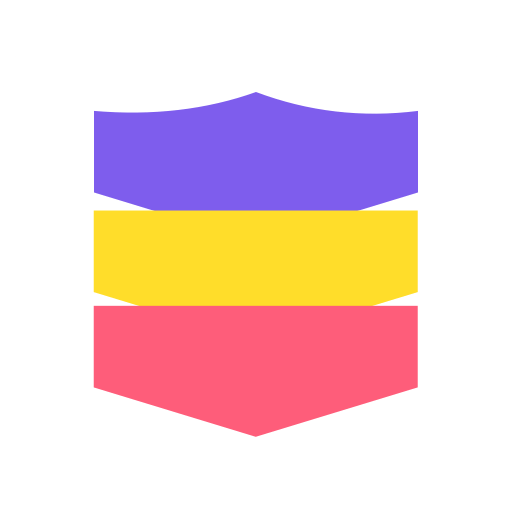game that are not blocked
In today’s fast-paced world, gaming has become an integral part of our lives. With the rise of technology and the internet, there has been a significant increase in the number of games available for players. While there are numerous games that are popular and highly sought after, there are also some hidden gems that often go unnoticed. These are the games that are not blocked by any restrictions or limitations, and yet they offer an amazing gaming experience. In this article, we will explore some of these games that are not blocked and why they are worth playing.
First and foremost, let’s understand what we mean by “blocked” games. Generally, blocked games refer to those that are restricted or banned by schools, offices, or other institutions. These restrictions are often put in place to prevent students or employees from getting distracted and to maintain productivity. However, this does not mean that these games are not suitable for playing. In fact, some of the best games that are not blocked can be educational and beneficial for both students and employees.
One such game is “The Oregon Trail.” This game has been around since the 1970s and has been a popular choice for schools to teach students about the history of the Oregon Trail. In this game, players take on the role of a pioneer and have to make decisions that will affect their journey to the west. The game is not only entertaining but also educational as it teaches players about the challenges and hardships faced by the pioneers during their journey. The game has been revamped over the years and is now available online, making it accessible to everyone, including those in schools or offices where games are usually blocked.
Another game that is not blocked and has gained popularity in recent years is “Minecraft.” This sandbox game allows players to explore and create their own virtual world using blocks. The game is not only fun but also encourages creativity and problem-solving skills. It has been used in schools to teach students about architecture, city planning, and even coding. With its endless possibilities, Minecraft has become a favorite among players of all ages and is not restricted by any institutions.
Moving on, let’s talk about “Khan Academy.” This is not your typical game, but it is a free online resource that offers educational videos and interactive exercises on various subjects such as math, science, and computer programming. The website has gamified the learning process by awarding points and badges to students as they complete lessons and tasks. This not only makes learning more fun but also motivates students to continue learning. Khan Academy is not blocked by any institutions, making it accessible to anyone who wants to enhance their knowledge and skills.
Another popular game that is not blocked is “Words with Friends.” This online multiplayer game is similar to the classic board game Scrabble, where players have to form words using letter tiles. The game can be played with friends or with random opponents, making it a great way to stay connected and have fun. It is not only a great way to improve vocabulary and spelling skills but also allows players to challenge their friends and engage in friendly competition. The game is not restricted by any institutions, making it a popular choice for students and employees to play during their free time.
One game that has gained a lot of attention in recent years is “Among Us.” This multiplayer game has taken the gaming world by storm with its simple yet addictive gameplay. In this game, players have to work together to identify and vote off the “imposters” among the crew members of a spaceship. The game not only requires teamwork and communication skills but also encourages players to use their critical thinking abilities to identify the imposters. It has become a popular choice for players of all ages, and it is not blocked by any institutions, making it accessible to everyone.
Moving on, let’s talk about “GeoGuessr.” This online game takes players on a virtual tour of the world, where they have to guess the location of a random street view image. It is not only a fun game but also a great way to learn about different places and cultures around the world. This game is not blocked by any institutions, making it a great choice for students to play during geography classes or for employees to take a break from work and travel the world virtually.
Another educational game that is not blocked is “Code.org.” This website offers free coding tutorials and games for students of all ages. It has been used in schools to introduce students to the world of coding and has helped many young minds develop an interest in computer science. The website is not blocked by any institutions, making it accessible for students to learn and practice coding skills.
Moving on, let’s talk about “Happy Wheels.” This game may not be suitable for younger players, but it is a popular choice among teenagers and adults. It is a physics-based racing game where players have to navigate through various obstacle courses using different vehicles. The game is not only entertaining but also requires players to strategize and use their problem-solving skills to complete levels. It is not blocked by any institutions, making it a popular choice for players to enjoy during their free time.
Last but not least, “Tetris” is a classic game that has stood the test of time. The goal of the game is to fit different shaped blocks together to form a complete line without any gaps. It may seem simple, but as the game progresses, it becomes more challenging and addictive. “Tetris” is not blocked by any institutions and has been a popular choice for students and employees to play during their breaks or downtime.
In conclusion, these are just some of the many games that are not blocked and offer a fun and educational gaming experience. These games have proven to be beneficial for students and employees, and they are not just a means of entertainment. They can help improve skills such as critical thinking, problem-solving, and creativity, making them a valuable addition to anyone’s gaming collection. So, the next time you are looking for a game to play, don’t overlook these hidden gems that are not blocked and give them a try.
block videos on youtube
The internet has become an integral part of our daily lives, and one of the most popular websites on the World Wide Web is YouTube . With over 2 billion active users, YouTube has become a go-to platform for people to watch videos, learn new things, and even earn a living. However, as with any popular platform, there are concerns about the content that is available on YouTube, especially when it comes to videos that are not suitable for certain audiences. This has led to the call for blocking videos on YouTube, and in this article, we will explore the reasons behind this demand and the implications it may have.
The first and most obvious reason for blocking videos on YouTube is to protect young viewers from inappropriate content. With YouTube being accessible to anyone with an internet connection, there is a high chance that children may come across videos that are not suitable for their age. While YouTube has a strict age restriction policy, it is not always effective, and there have been instances where children have stumbled upon graphic or violent videos on the platform. This not only exposes them to content that may be disturbing or traumatizing but also raises concerns about their online safety.
Another reason for blocking videos on YouTube is to protect the mental health of viewers. With the rise of social media and online influencers, there has been a growing trend of creating sensational and controversial content for the sake of views and likes. This has resulted in the spread of misinformation, hate speech, and harmful ideologies through videos on YouTube. These videos not only have the potential to negatively impact the mental well-being of viewers but also contribute to the polarization of society. By blocking such videos, YouTube can play a significant role in promoting responsible and ethical content creation.
Moreover, blocking videos on YouTube can also help in curbing the spread of fake news and conspiracy theories. With the platform being used as a source of information by millions of people, there have been instances where false and baseless information has been shared through videos. This not only leads to confusion and misinformation but can also have real-life consequences. In recent times, we have seen how fake news and conspiracy theories have contributed to the spread of the COVID-19 pandemic and fueled political unrest. By blocking such videos, YouTube can prevent the spread of misinformation and promote credible sources of information.
In addition to protecting the viewers, blocking videos on YouTube can also benefit content creators. With the rise of clickbait and sensational content, there has been a growing concern about the impact it has on the quality of content on the platform. Many creators feel pressured to create content that is controversial or shocking to gain views and maintain their relevance on the platform. This not only affects the authenticity of their content but also takes away from the hard work and creativity that goes into making quality videos. By blocking such videos, YouTube can promote a healthier environment for creators to focus on creating meaningful and original content.
However, the idea of blocking videos on YouTube has been met with criticism and concerns about censorship. YouTube has often been hailed as a platform for free speech, and blocking videos can be seen as a violation of this principle. There have been instances where videos have been blocked or removed for reasons that were deemed unjustified by creators and viewers. This has raised questions about the criteria for blocking videos and the potential for abuse of power by the platform. Moreover, there are concerns that blocking videos may lead to the suppression of diverse voices and opinions, ultimately leading to a homogenized platform.
Another concern about blocking videos on YouTube is the impact it may have on the platform’s revenue. With the majority of YouTube’s revenue coming from advertisements, blocking videos may result in a loss of revenue for the platform and its creators. This may also lead to a decrease in the quality and quantity of content on the platform as creators may not be able to sustain their channels without the necessary income. YouTube may also face backlash from advertisers who may not want their ads to be associated with certain types of content. This could lead to a decrease in advertising revenue and ultimately affect the financial stability of the platform.
Furthermore, the process of blocking videos on YouTube is not a simple one. With millions of videos being uploaded every day, it is a daunting task for the platform to monitor and block videos that may violate its policies. While YouTube has algorithms in place to detect and flag inappropriate content, they are not always accurate, and there have been instances where videos have been mistakenly taken down. This highlights the need for a more efficient and accurate system to block videos on YouTube without infringing on free speech.
In conclusion, the call for blocking videos on YouTube is a complex issue with valid arguments on both sides. While it is essential to protect viewers, promote responsible content creation, and prevent the spread of misinformation, it is equally important to ensure that free speech is not compromised and diverse voices continue to be heard. As a popular platform with a vast user base, YouTube has a responsibility to maintain a safe and healthy environment for its users. However, this should be done with careful consideration and transparency to avoid any unintended consequences. Ultimately, finding a balance between protecting viewers and promoting free speech is crucial for the long-term sustainability and success of YouTube.
how to disable an ipad
The iPad has become a ubiquitous device in today’s society, with its sleek design and versatile functions. However, there may be instances where you may want to disable your iPad, whether it’s due to security concerns or simply wanting to limit its usage. In this article, we will delve into the various ways to disable an iPad and explore when and why you may need to do so. So, if you’ve been wondering how to disable an iPad, read on to learn more.



Before we get into the specifics of disabling an iPad, let’s first understand what it means to “disable” a device. Disabling a device essentially means to turn off or restrict its functions in some way. When we speak of disabling an iPad, we are referring to limiting or blocking certain features or functionalities of the device. This can include turning off the device completely, restricting access to certain apps or features, or even remotely locking the device.
Now that we have a better understanding of what it means to disable an iPad, let’s explore the various ways to do so. The methods for disabling an iPad can be broadly classified into two categories – hardware-based and software-based. The hardware-based methods involve physically manipulating the device, while the software-based methods involve changing settings or using third-party applications. Let’s take a closer look at each of these methods.
Hardware-based Methods:
1. Power off the device:
The simplest way to disable an iPad is to power it off. To do this, press and hold the power button until the “slide to power off” option appears. Then, slide the button to turn off the device. This will completely shut down the iPad and disable all its functions.
2. Remove the SIM card:
If you want to disable the cellular function of your iPad, you can remove the SIM card from the device. This will prevent the iPad from connecting to any cellular network, effectively disabling it. To remove the SIM card, you will need a SIM removal tool or a paperclip. Insert the tool into the small hole on the side of the iPad and push gently until the SIM card tray pops out. Then, remove the SIM card and reinsert the tray into the iPad.
3. Turn on Airplane mode:
Another way to disable the cellular function of the iPad is to turn on Airplane mode. This will disconnect the iPad from all cellular and wireless networks, effectively disabling its ability to make calls or use data. To turn on Airplane mode, go to Settings > Airplane mode and toggle the switch to on.
4. Use Guided Access:
Guided Access is a feature on iPads that allows you to restrict the use of certain functions or apps. To use Guided Access, go to Settings > General > Accessibility and toggle on the Guided Access feature. Then, open the app you want to restrict and triple-click the home button. This will bring up the Guided Access screen, where you can choose which features to disable and set a passcode to exit Guided Access.
5. Use Restrictions:
Similar to Guided Access, Restrictions allow you to disable certain features or apps on your iPad. To use Restrictions, go to Settings > General > Restrictions and toggle the feature on. Then, enter a passcode and choose which features or apps you want to disable.
Software-based Methods:
1. Use parental control apps :



If you want to disable your child’s iPad or restrict their usage, you can use parental control apps such as Screen Time, Kidslox, or Qustodio. These apps allow you to set time limits, block certain apps or websites, and even remotely lock the device.
2. Use Find My iPad:
Find My iPad is a feature that allows you to locate a lost or stolen iPad. However, it can also be used to remotely disable the device. To do this, you will need to have Find My iPad enabled on the device and have access to the iCloud account associated with the iPad. Then, go to iCloud.com and log in with the iCloud account. From there, you can select the iPad and choose the “Erase iPad” option to remotely disable it.
3. Factory reset the device:
If you want to completely disable the iPad and erase all its data, you can perform a factory reset. This will reset the iPad to its original factory settings, effectively disabling it. To do this, go to Settings > General > Reset > Erase All Content and Settings. Keep in mind that this will permanently erase all data on the device, so be sure to back up any important information beforehand.
4. Contact Apple Support:
If you are unable to disable your iPad using any of the methods mentioned above, you can contact Apple Support for assistance. They may be able to remotely disable the device for you or provide further guidance on how to do so.
When and Why You May Need to Disable an iPad:
1. Security concerns:
One of the most common reasons for disabling an iPad is due to security concerns. If you have lost your iPad or it has been stolen, you may want to disable it to prevent unauthorized access to your personal data.
2. Limiting usage:
If you have children who use iPads, you may want to limit their usage by disabling certain features or apps. This can help prevent them from accessing inappropriate content or spending too much time on the device.
3. Selling or giving away the device:
If you are selling or giving away your iPad, you may want to disable it to ensure that the new owner does not have access to your personal data.
4. Technical issues:
In some cases, you may need to disable your iPad to troubleshoot technical issues. This can help isolate the problem and prevent further damage to the device.



5. Compliance with school or workplace policies:
In certain settings, such as schools or workplaces, iPads may be provided to students or employees with restrictions on their usage. In such cases, disabling the device may be necessary to comply with these policies.
In conclusion, there are various methods to disable an iPad, depending on your specific needs or reasons. Whether it’s for security concerns, limiting usage, or troubleshooting technical issues, knowing how to disable an iPad can come in handy. However, it’s important to use these methods responsibly and only disable the device when necessary.
